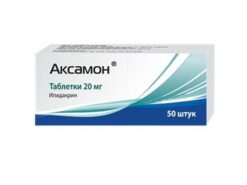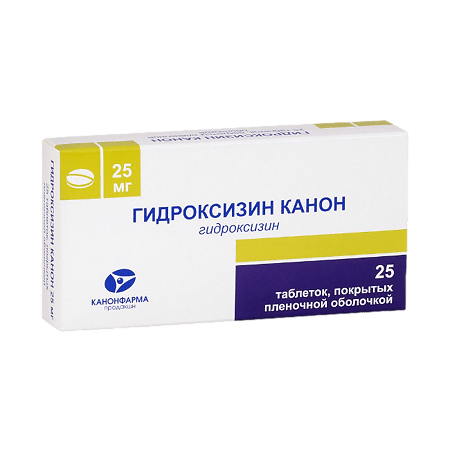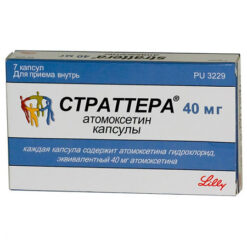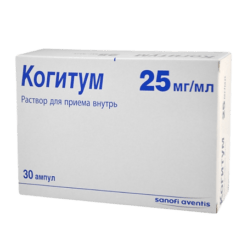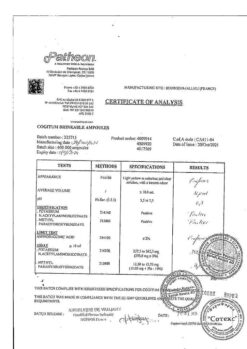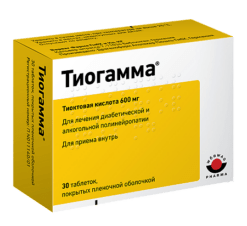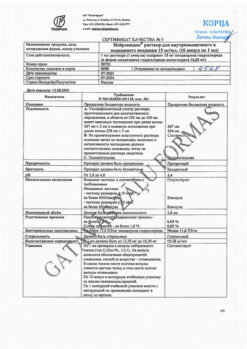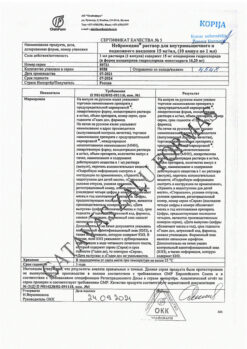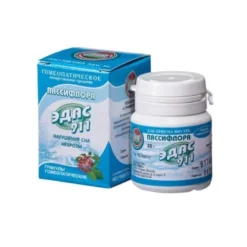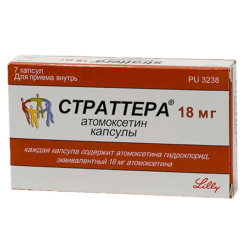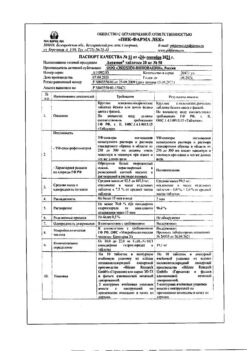Subtotal: €31.29
Hydroxyzine Canon, 25 mg 25 pcs
€2.98 €2.48
Out of stock
(E-mail when Stock is available)
Pharmacotherapeutic group:
Anxiolytic medicine (tranquilizer)
ATX code: [N05BB01]
Pharmacological properties
Pharmacodynamics
Hydroxyzine is a first-generation blocker of H1-histamine receptors, a phenothiazine derivative with antimuscarinic and sedative properties and diphenylmethane, and promotes inhibition of the activity of certain subcortical areas.
It has H1-histamine-blocking, bronchodilator and antiemetic effects and has a moderate inhibitory effect on gastric secretion. Hydroxyzine significantly reduces itching in patients with urticaria, eczema and dermatitis.
Hydroxyzine has a positive effect on cognitive abilities and improves attention and memory. Hydroxyzine is not addictive or psychologically addictive and no withdrawal syndrome has been noted with prolonged use. Hydroxyzine is able to inhibit the central nervous system, also has anticholinergic, antihistamine, antispasmodic, local anesthetic, sympatho-anesthetic effect, has muscle relaxant activity.
In case of hepatic insufficiency, the H1-histamine-blocking effect may be prolonged up to 96 h after a single dose. It has moderate anxiolytic activity.
Polysomnography in patients with insomnia and anxiety demonstrates prolongation of sleep duration, decreased frequency of nocturnal awakenings after a single or repeated dose of hydroxyzine 50 mg. Reduction of muscle tension in patients with anxiety has been noted when taking the drug in a dose of 50 mg 3 times a day.H1-histamine-blocking effect occurs approximately 1 hour after taking the tablets orally. The sedative effect appears after 30-45 minutes.
Pharmacokinetics.
Absorption: Absorption is high. Time to reach maximum concentration (TSmax) after oral administration is 2 hours. After an average dose of 50 mg, the TSmax in adults is 70 mg/ml.
Distribution: The distribution coefficient is 7-16 l/kg in adults. Hydroxyzine penetrates the blood-brain barrier and the placenta, concentrating more in fetal than in maternal tissues. After oral administration, hydroxyzine penetrates the skin well, with concentrations of hydroxyzine in the skin well in excess of serum concentrations after both single and multiple doses. Plasma concentrations of hydroxyzine do not necessarily reflect its tissue binding or distribution at skin receptors. It has an effect on skin inflammation depending on the serum concentration.
Metabolism: Hydroxyzine is metabolized in the liver. Cetirizine, the main metabolite (45%), is a blocker of H1-histamine receptors. Metabolites are found in breast milk.
Elimination: The elimination half-life (T1/2) in adults is 14 h (range: 7-20 h). The total clearance of hydroxyzine is 13 ml/min/kg. About 0.8% of hydroxyzine is excreted unchanged through the kidneys. The main metabolite cetirizine is excreted mainly in the urine, also unchanged (25% of the taken dose of hydroxyzine).
Pharmacokinetics in special groups of patients.
In elderly patients
In elderly patients, the T1/2 was 29 hours. The volume of distribution is 22.5 L/kg. It is recommended to reduce the daily dose of hydroxyzine when administered to elderly patients.
Children under 1 year
In children the total clearance is 2.5 times higher than in adults. The dose should be adjusted. The elimination half-life is 4 hours.
Children from 1 to 14 years
The elimination half-life is 11 hours.
In patients with hepatic impairment
In patients with secondary hepatic dysfunction due to primary biliary cirrhosis, total clearance was approximately 66% of that recorded in healthy volunteers. In patients with liver disease, the T1/2 increased to 37 hours, with higher serum concentrations of metabolites than in young patients with normal liver function. In patients with hepatic impairment, it is recommended to reduce the daily dose or the frequency of administration.
In patients with renal impairment
The pharmacokinetics of hydroxyzine were studied in 8 patients with severe renal impairment (creatinine clearance 24+7 ml/min). The duration of exposure to hydroxyzine did not change significantly, while the duration of exposure to cetirizine was prolonged. To avoid any significant accumulation of cetirizine metabolite after repeated use of hydroxyzine in patients with impaired renal function, the daily dose of hydroxyzine should be reduced.
Indications
Symptomatic treatment of anxiety in adults.
As a sedative during premedication.
Symptomatic treatment of itching of allergic origin
Pharmacological effect
Pharmacotherapeutic group:
anxiolytic (tranquilizer)
ATX code: [N05BB01]
Pharmacological properties
Pharmacodynamics
Hydroxyzine is a first-generation H1-histamine receptor blocker, a derivative of phenothiazine with antimuscarinic and sedative properties and diphenylmethane, which helps inhibit the activity of certain subcortical zones.
It has H1-histamine blocking, bronchodilating and antiemetic effects, and has a moderate inhibitory effect on gastric secretion. Hydroxyzine significantly reduces itching in patients with urticaria, eczema and dermatitis.
Hydroxyzine has a positive effect on cognitive abilities, improves attention and memory. Hydroxyzine does not cause addiction or mental dependence; with prolonged use, no withdrawal syndrome has been observed. Hydroxyzine is capable of depressing the central nervous system, and also has anticholinergic, antihistamine, antispasmodic, local anesthetic, sympatholetic effects, and has muscle relaxant activity.
In case of liver failure, the H1-histamine blocking effect can be prolonged up to 96 hours after a single dose. Has moderate anxiolytic activity.
Polysomnography in patients with insomnia and anxiety demonstrates an increase in sleep duration and a decrease in the frequency of night awakenings after taking a single or repeated dose of hydroxyzine at a dose of 50 mg. A decrease in muscle tension in patients with anxiety was noted when taking the drug at a dose of 50 mg 3 times a day. The H1-histamine blocking effect occurs approximately 1 hour after taking the tablets orally. The sedative effect appears after 30-45 minutes.
Pharmacokinetics.
Absorption: Absorption is high. The time to reach maximum concentration (TCmax) after oral administration is 2 hours. After taking an average dose of 50 mg, the Tmax in adults is 70 mg/ml.
Distribution: The distribution coefficient is 7-16 l/kg in adults. Hydroxyzine penetrates the blood-brain barrier and the placenta, concentrating more in fetal than maternal tissues. After oral administration, hydroxyzine penetrates well into the skin, with hydroxyzine concentrations in the skin far exceeding serum concentrations after both single and multiple doses. Plasma concentration of hydroxyzine does not necessarily reflect its tissue binding or distribution at skin receptors. It has an effect on skin inflammation depending on serum concentration.
Metabolism: Hydroxyzine is metabolized in the liver. Cetirizine – the main metabolite (45%) is a blocker of H1-histamine receptors. Metabolites are found in breast milk.
Elimination: Half-life (T1/2) in adults is 14 hours (range: 7-20 hours). The total clearance of hydroxyzine is 13 ml/min/kg. About 0.8% of hydroxyzine is excreted unchanged through the kidneys. The main metabolite cetirizine is excreted mainly in the urine, also unchanged (25% of the dose of hydroxyzine).
Pharmacokinetics in special groups of patients.
In elderly patients
In elderly patients T1/2 was 29 hours. The volume of distribution is 22.5 l/kg. It is recommended to reduce the daily dose of hydroxyzine when prescribed to elderly patients.
Children under 1 year
In children, the total clearance is 2.5 times higher than in adults. The dose must be adjusted. The half-life is 4 hours.
Children from 1 year to 14 years
The half-life is 11 hours.
In patients with liver failure
In patients with liver dysfunction secondary to primary biliary cirrhosis, the total clearance was approximately 66% of the value recorded in healthy volunteers. In patients with liver diseases, T1/2 increased to 37 hours, the concentration of metabolites in the blood serum was higher than in young patients with normal liver function. For patients with liver failure, a reduction in the daily dose or frequency of administration is recommended.
In patients with renal failure
The pharmacokinetics of hydroxyzine was studied in 8 patients with severe renal failure (creatinine clearance 24+7 ml/min). The duration of exposure to hydroxyzine did not change significantly, while the duration of exposure to cetirizine was increased. To avoid any significant accumulation of cetirizine metabolite after repeated use of hydroxyzine in patients with impaired renal function, the daily dose of hydroxyzine should be reduced.
Special instructions
When used simultaneously with drugs that have m-anticholinergic properties and drugs that depress the central nervous system, the dose of hydroxyzine must be reduced.
Hydroxyzine may lead to prolongation of the QT interval on the electrocardiogram, so concomitant use with other drugs that can interfere with cardiac activity may increase the risk of developing arrhythmias.
It is assumed that other drugs that cause changes in the electrocardiogram (atropine, antiparkinsonian drugs, lithium carbonate, quinidine, phenothiazines, procainamide, tricyclic antidepressants, thioridazine) may aggravate and intensify the changes that can be caused by hydroxyzine and increase the risk of sudden death.
Concomitant use of two or more drugs that prolong the QT interval should be avoided due to the risk of additive effects that may cause potentially life-threatening and severe cardiac arrhythmias.
In case of renal and/or liver failure, doses should be reduced.
In the elderly, the dosage should be individualized, starting with half the minimum dose, and adjusting within the range of recommended doses. If it is necessary to perform allergy tests or conduct a methacholine test, taking the drug Hydroxyzine Canon should be stopped 5 days before the study to prevent the receipt of distorted data.
During treatment with Hydroxyzine Canon, you should avoid drinking alcohol.
Impact on the ability to drive vehicles and machinery
Hydroxyzine Canon can impair the ability to concentrate and the speed of psychomotor reactions. Taking other sedative medications may enhance this effect.
Therefore, you should refrain from driving vehicles and engaging in other potentially hazardous activities that require increased concentration and speed of psychomotor reactions.
Active ingredient
Hydroxyzine
Composition
1 film-coated tablet contains::
active substance:
hydroxyzine hydrochloride 25 mg;
excipients:
pregelatinized corn starch 30 mg,
colloidal silicon dioxide 0.7 mg,
magnesium stearate 1 mg,
mannitol 40 mg,
microcrystalline cellulose 33.3 mg;
film shell composition:
opadry white – 4 mg, including: hypromellose (hydroxypropyl methylcellulose) 1.35 mg, hyprolose (hydroxypropylcellulose) 1.35 mg, talc 0.8 mg, titanium dioxide 0.5 mg.
Contraindications
Hypersensitivity to any of the components of the drug, cetirizine and other piperazine derivatives, aminophylline or ethylenediamine;
porphyria;
children under 3 years of age;
pregnancy, childbirth and breastfeeding.
With caution: with myasthenia gravis, prostatic hyperplasia with clinical manifestations, difficulty urinating, constipation, with glaucoma, dementia, seizure disorders, including epilepsy, with a tendency to arrhythmia, including electrolyte imbalance (hypokalemia, hypomagnesemia), in patients with a history of heart disease (with heart failure and arterial hypertension) or when using drugs that can cause arrhythmia in hyperthyroidism. Hydroxyzine contributes to a decrease in gastrointestinal motility, the development of stenosing peptic ulcers, and respiratory failure.
Side Effects
Possible side effects are listed below by body system and frequency of occurrence.
WHO classification of the incidence of side effects:
very often – >1/10 prescriptions (>10%)
often – from >1/100 to 1% and <10%)
uncommon – from >1/1000 to 0.1% and <1%)
rarely – from >1/10000 to 0.01% and <0.1%)
very rare – <1/10000 prescriptions (<0.01%)
The most common adverse reactions were drowsiness, headache, lethargy, dry mouth and fatigue.
Immune system disorders:
rarely: hypersensitivity;
very rare: anaphylactic shock.
Nervous system disorders:
uncommon: dizziness, insomnia, tremor;
rarely: convulsions, dyskinesia.
Mental disorders:
uncommon: agitation, confusion;
rarely: hallucinations, disorientation.
Visual disorders:
rarely: accommodation disturbance, visual impairment.
Cardiac disorders:
rarely: tachycardia;
frequency unknown: prolongation of the QT interval on the electrocardiogram, ventricular tachycardia of the “pirouette” type.
Vascular disorders:
rarely: decreased blood pressure.
Disorders of the respiratory system, chest and mediastinal organs:
very rarely: bronchospasm.
Gastrointestinal disorders:
uncommon: nausea;
rarely: vomiting, constipation.
Liver and biliary tract disorders:
rarely: abnormal liver function tests;
frequency unknown: hepatitis.
Renal and urinary tract disorders:
rarely: urinary retention.
Skin and subcutaneous tissue disorders:
rarely: itching, rash (erythematous, maculopapular), urticaria, dermatitis;
very rare: angioedema, increased sweating, acute generalized exanthematous pustular rash, erythema multiforme, Stevens-Johnson syndrome.
General disorders:
rarely: hyperthermia, malaise.
The following side effects were observed when taking cetirizine, the main metabolite of hydroxyzine: thrombocytopenia, aggression, depression, tic, dystonia, paresthesia, oculogyric crisis, diarrhea, dysuria, enuresis, asthenia, edema, weight gain and can be observed when taking hydroxyzine.
Interaction
It is necessary to take into account the potentiating effect of hydroxyzine when used together with drugs that depress the central nervous system (CNS), such as narcotic analgesics, barbiturates, tranquilizers, hypnotics, and alcohol. In this case, their doses should be selected individually. Concomitant use with monoamine oxidase inhibitors (MAO) and anticholinergic blockers should be avoided. The drug interferes with the pressor effect of epinephrine and the anticonvulsant activity of phenytoin, and also interferes with the action of betahistine and cholinesterase inhibitor drugs.
It was found that the use of cimetidine at a dose of 600 mg twice a day increases the concentration of hydroxyzine in the serum by 36% and reduces the maximum concentration of the cetirizine metabolite by 20%.
The effect of atropine, belladonna alkaloids, cardiac glycosides, antihypertensive drugs, and H2-histamine receptor blockers is not affected by hydroxyzine. Hydroxyzine is an inhibitor of the CYP2D6 isoenzyme and, in high doses, may cause drug interactions with CYP2D6 substrates.
Since hydroxyzine is metabolized in the liver, an increase in its plasma concentration can be expected when used simultaneously with inhibitors of microsomal liver enzymes.
Since hydroxyzine is metabolized by alcohol dehydrogenase and the CYP3A4/5 isoenzyme, it is possible to increase the concentration of hydroxyzine in the blood plasma when used simultaneously with drugs that potentially inhibit the CYP3A4/5 isoenzyme (telithromycin, clarithromycin, delavirdine, stiripentol, ketoconazole, voriconazole, intraconazole, posaconazole and some protease inhibitors HIV, including atazanavir, indinavir, nelfinavir, ritonavir, saquinarine, lopinavir/ritonavir, saquinarine/ritonavir and tipranavir/ritonavir).
However, inhibition of one metabolic pathway may be partially compensated by the activity of another. Concomitant use of hydroxyzine with drugs that have the potential to cause arrhythmias may increase the risk of QT prolongation and torsade de pointes (TdP).
The use of the drug simultaneously with drugs that have an ototoxic effect, such as gentamicin, may mask symptoms of ototoxicity such as dizziness. The drug should be discontinued 3 days before the planned skin tests with allergens.
Overdose
Symptoms of CNS toxicity are associated with excessive m-anticholinergic effects, suppression or paradoxical stimulation of the CNS. These symptoms include nausea, vomiting, tachycardia, pyrexia, somnolence, abnormal pupillary reflex, tremor, confusion, or hallucinations.
Subsequently, depression of consciousness, breathing, convulsions, decreased blood pressure, and arrhythmia may develop. Possible worsening of coma and cardiopulmonary collapse.
Treatment: It is necessary to monitor the condition of the airways, breathing and circulation using Electrocardiographic (ECG) monitoring, and ensure adequate oxygenation. Cardiac activity and blood pressure should be monitored for 24 hours after symptoms disappear.
In large doses, hydroxyzine can lead to prolongation of the QT interval and obvious changes in the electrocardiogram.
In case of mental status disturbance, it is necessary to exclude the use of other drugs or alcohol; if necessary, the patient should be given oxygen inhalation, naloxone, dextrose (glucose) and thiamine. The use of analeptics is not permissible.
If it is necessary to obtain a vasopressor effect, norepinephrine or metaraminol is prescribed. Epinephrine should not be used. If a significant amount of the drug is ingested, gastric lavage can be performed followed by endotracheal intubation.
Activated carbon can be used, but there is insufficient data on its effectiveness. There is no specific antidote. Hemodialysis is not effective.
Literary data indicate that in the event of the development of severe, life-threatening, intractable m-anticholinergic effects that are not relieved by other drugs, it is possible to use a therapeutic dose of physostigmine. Physostigmine should not be used solely to bring the patient to consciousness.
If the patient was taking tricyclic antidepressants, the use of physostigmine can provoke seizures and irreversible cardiac arrest. The use of physostigmine should also be avoided in patients with cardiac conduction disorders.
Storage conditions
In a dry place, protected from light, at a temperature not exceeding 25°C.
Shelf life
2 years
Manufacturer
Kanonpharma production CJSC, Russia
| Shelf life | 2 years |
|---|---|
| Conditions of storage | In a dry, light-protected place at a temperature not exceeding 25 ° C. |
| Manufacturer | Kanonfarma Production ZAO, Russia |
| Medication form | pills |
| Brand | Kanonfarma Production ZAO |
Related products
Buy Hydroxyzine Canon, 25 mg 25 pcs with delivery to USA, UK, Europe and over 120 other countries.

